Story
Update from our Dr Glen Tarran on the Antarctic PICCOLO expedition
28 February 2024
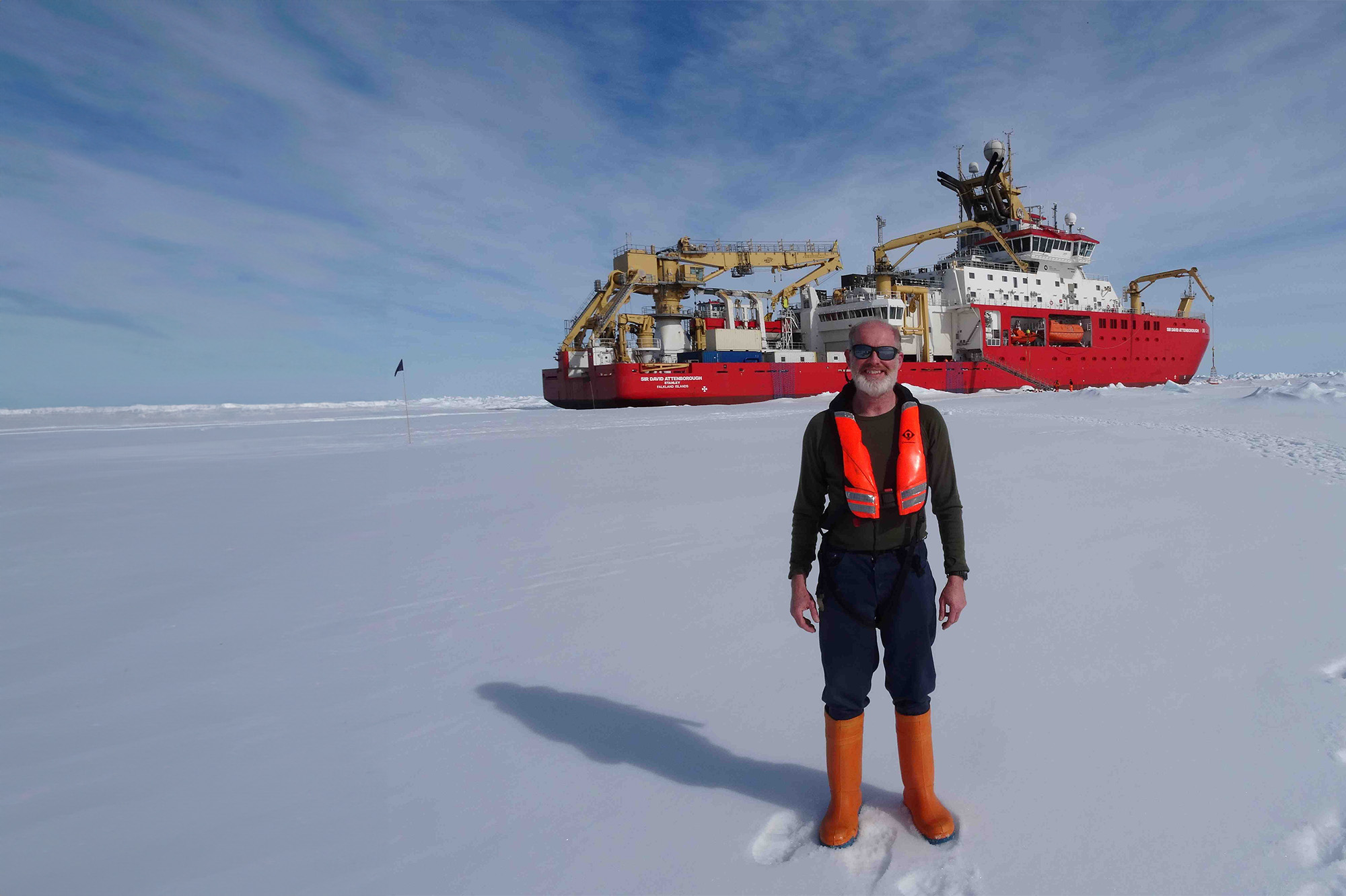 Above: “I am turning into Santa Claus (I just seem to have got lost and have ended up near the wrong Pole!). The beard is currently a useful insulator and sun reflector, but I’ll remove it when we head back to Punta Arenas.” - Dr Glen Tarran.
Above: “I am turning into Santa Claus (I just seem to have got lost and have ended up near the wrong Pole!). The beard is currently a useful insulator and sun reflector, but I’ll remove it when we head back to Punta Arenas.” - Dr Glen Tarran. “Well, as you can see from the photos, we’re having some glorious weather... unlike the UK! We’re just starting day 2 of our on/through ice activities.”
“This includes coring, drilling through the ice to lower the CTD [CTD stands for conductivity, temperature, and depth, and refers to a package of electronic instruments that measure these properties] and Niskin bottles [used for general purpose water sampling]. There are also lots of other instruments, taking all sorts of under ice optics measurements.”
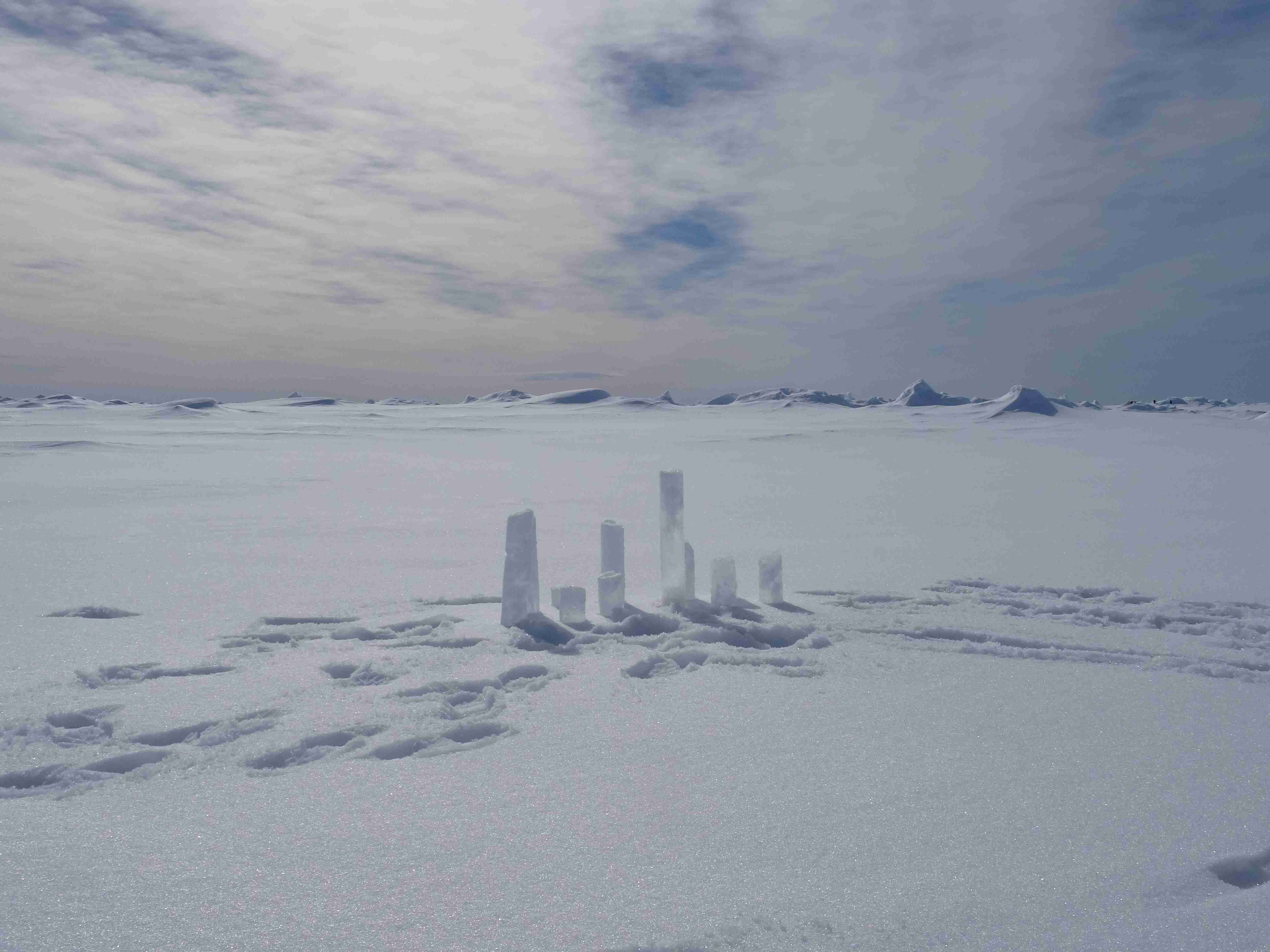 Above: Sections of ice core samples. These were no longer required for measurements however Glen said "made an attractive ‘Ice henge‘."
Above: Sections of ice core samples. These were no longer required for measurements however Glen said "made an attractive ‘Ice henge‘."What are ice cores?
Ice cores are cylinders of ice drilled from ice sheets and glaciers. Some ice cores are drilled through ancient ice, providing frozen time capsules that allow scientists to reconstruct climate far into the past. The ice cores drilled on the PICCOLO cruise are from pack ice which forms and melts every year with the changing seasons.
“I have preserved samples from yesterday’s below ice Niskin bottles, and also from the interface water for analysis by microscopy for plankton community structure back at PML. We've also been snow sampling for microplastics.”
“A couple of days ago we landed a large piece of overturned ice. All the ice is brown underneath, and it is composed of diatoms, almost all centric between about 50-120 µm.”
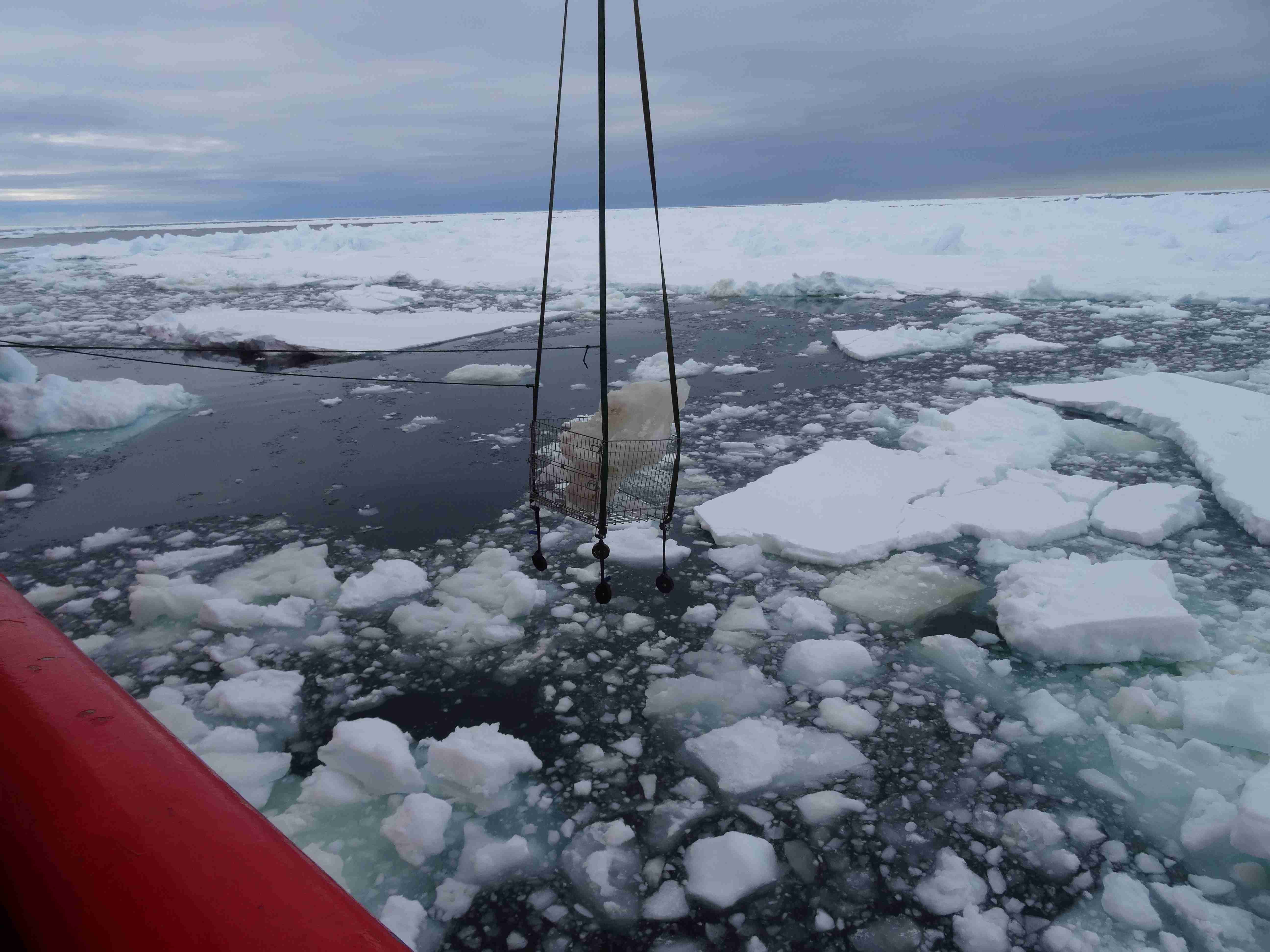 Above: The large piece of ice recovered by ship’s crew. Once thawed, Glen discovered it is composed of diatoms – see below photo of the sample taken under the microscope. Diatoms are a type of phytoplankton, a large group of plankton comprising of several genera of algae, found in oceans, waterways and soils of the world....and ice.
Above: The large piece of ice recovered by ship’s crew. Once thawed, Glen discovered it is composed of diatoms – see below photo of the sample taken under the microscope. Diatoms are a type of phytoplankton, a large group of plankton comprising of several genera of algae, found in oceans, waterways and soils of the world....and ice. 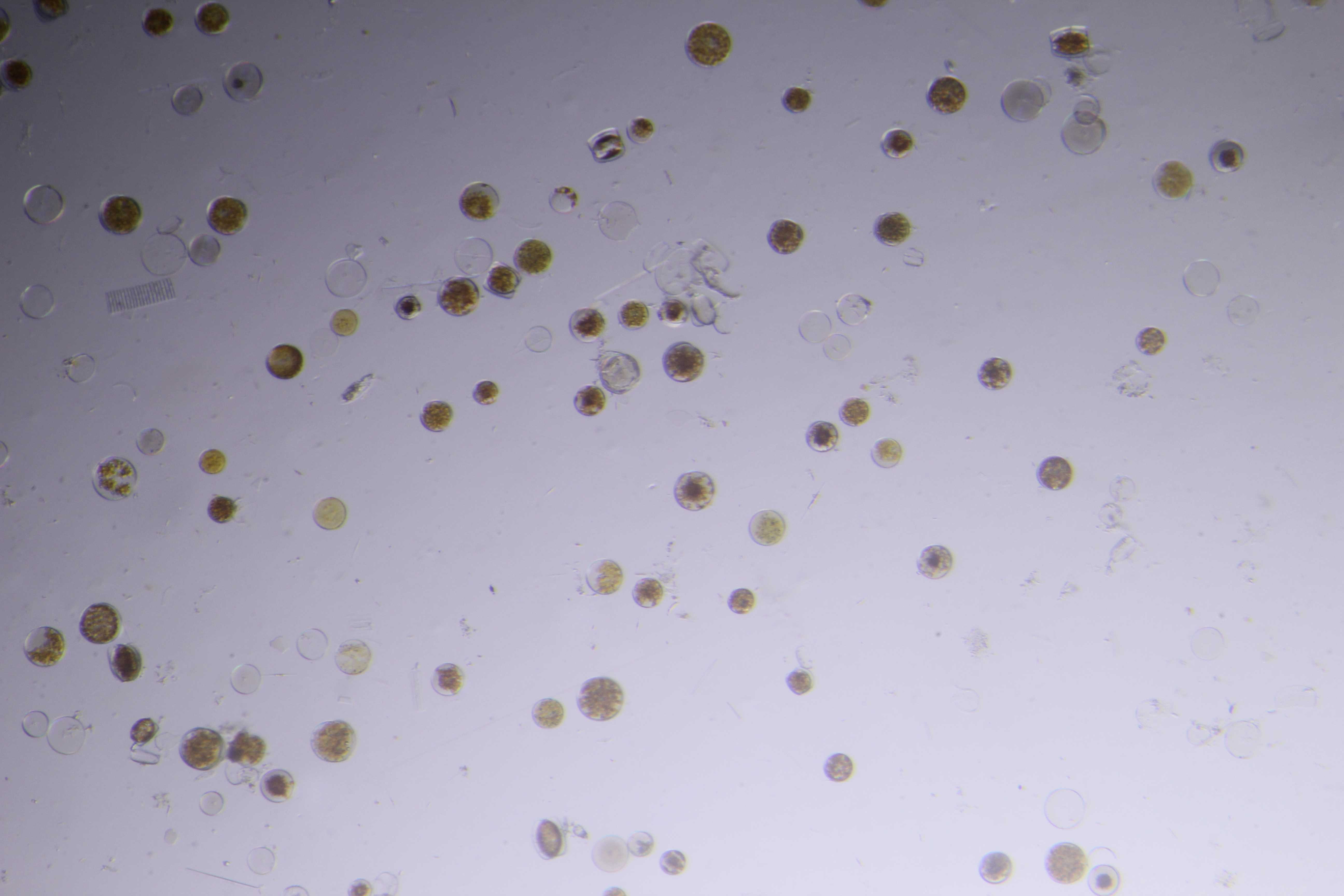
“I did also see the occasional ciliate. I collected just over 1 kg of ice, thawed it and there are now 3 preserved samples of soup. The biomass was incredible. The bottle in the photo [see below] is unconcentrated!”
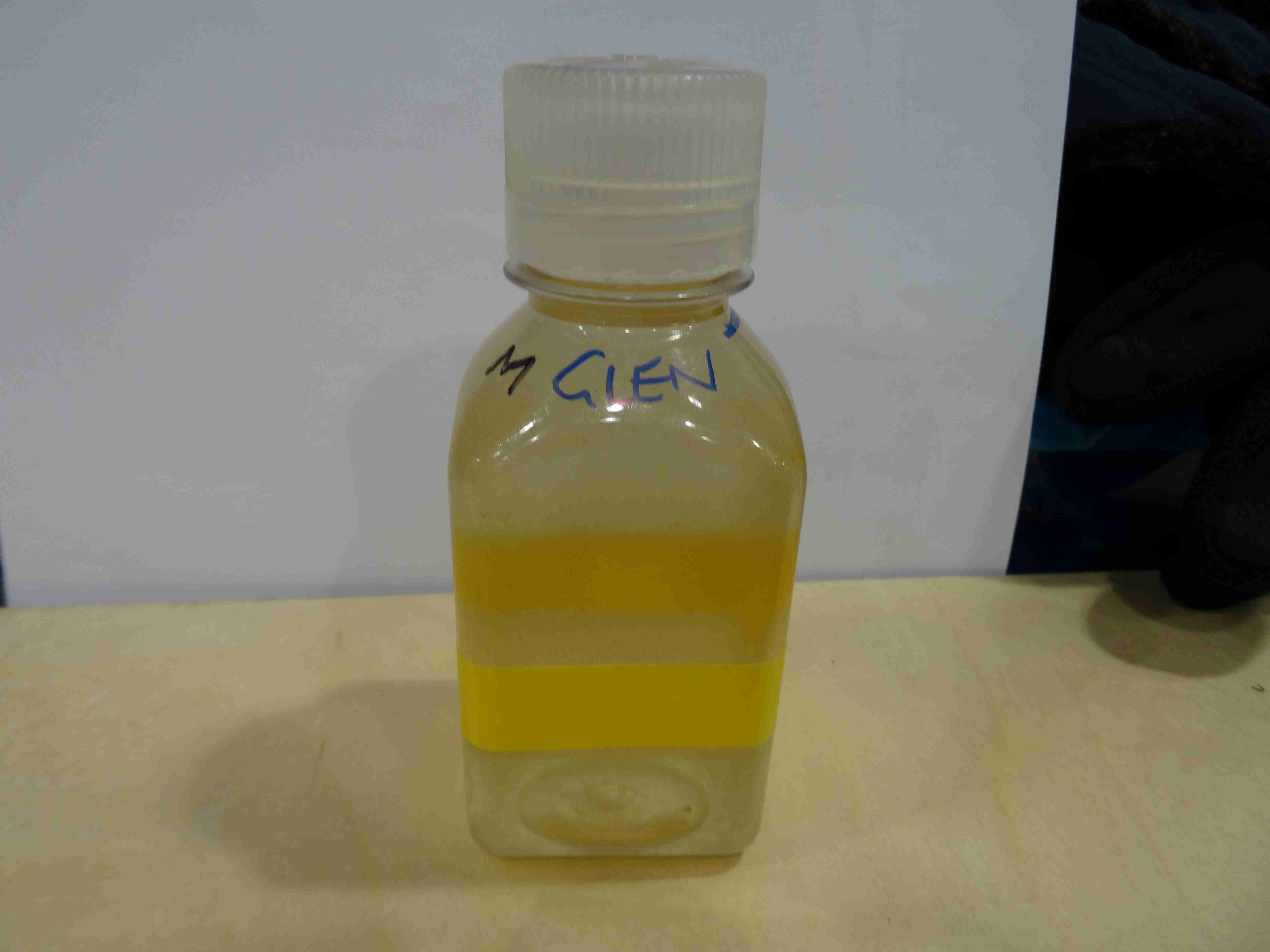
“The open water is often blue, like the oligotrophic ocean gyres. There are no cyanobacteria at all and low abundance of pico- and nanoeukaryote algae, also like the oligotrophic ocean gyres. It seems that most of the production is associated with the underside of the ice, although, there was an area off the Larsen C ice sheet with a Phaeocystis [a common alga found in polar regions and often blooms in open water] bloom a few weeks ago and there is a reasonable amount of chlorophyll showing up on the satellite imagery close to the southwest corner of James Ross Island.”
"Phaeocystis seems to be a ubiquitous genus of phytoplankton which also blooms off Plymouth every spring. It either lives as a free-living single-celled flagellate, or, when it blooms it forms colonies with single cells embedded in mucilage. The colonies can easily be seen with the naked eye."
“We’ve just finished analysing bacteria samples from yesterday’s Niskin bottles, interface water and T0 samples for bioassay experiments, which will take 6 days to get the results. By then we should be just about to head back to Punta and the end of the cruise. Then it’s off to the Falklands for FOCUS project fieldwork!”
A huge thank you to Glen for sharing this fantastic update. Safe sails Glen!
Related information
PICCOLO photo diary: 30-day scientific expedition in Antarctica
PML scientists head to Antarctica to investigate the carbon secrets of the Southern Ocean